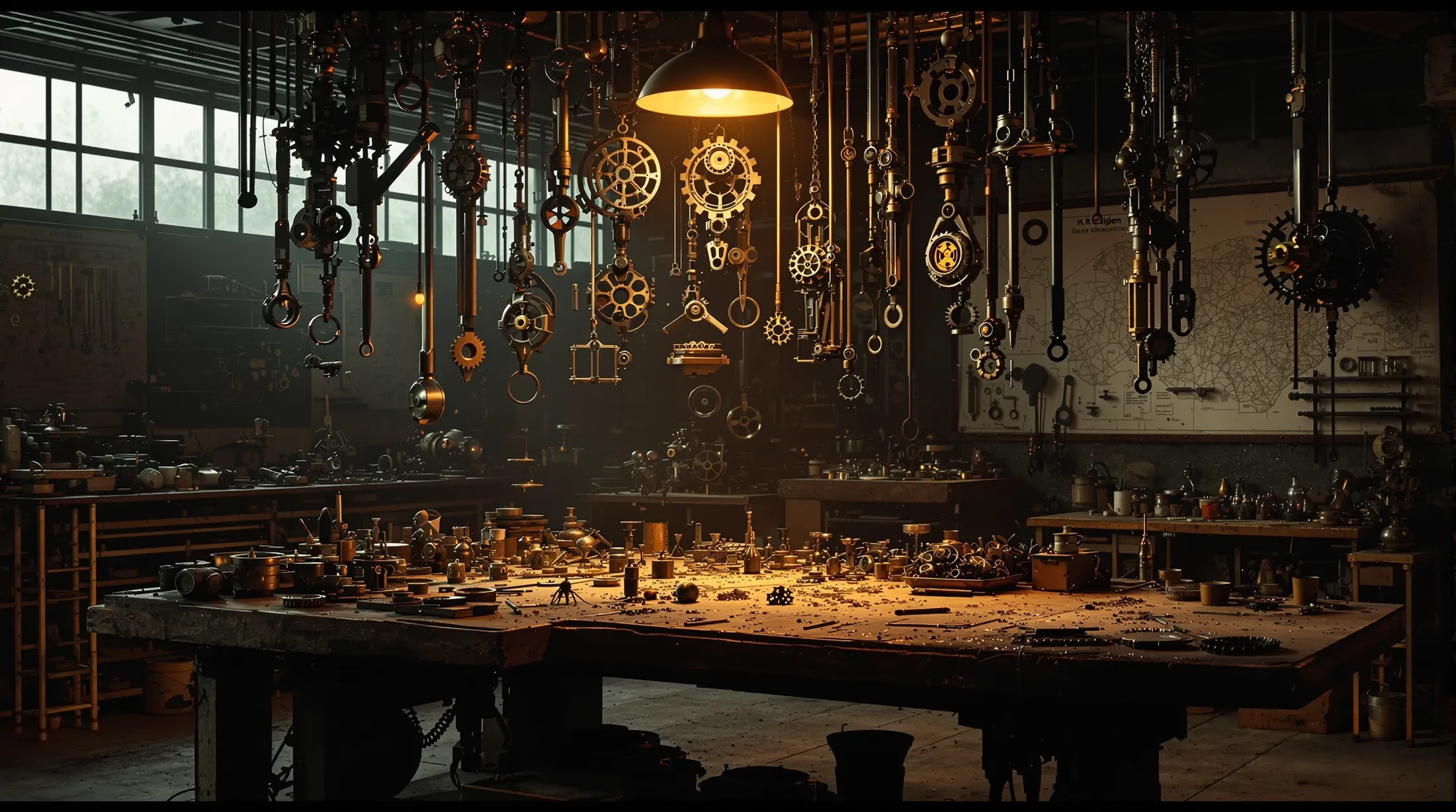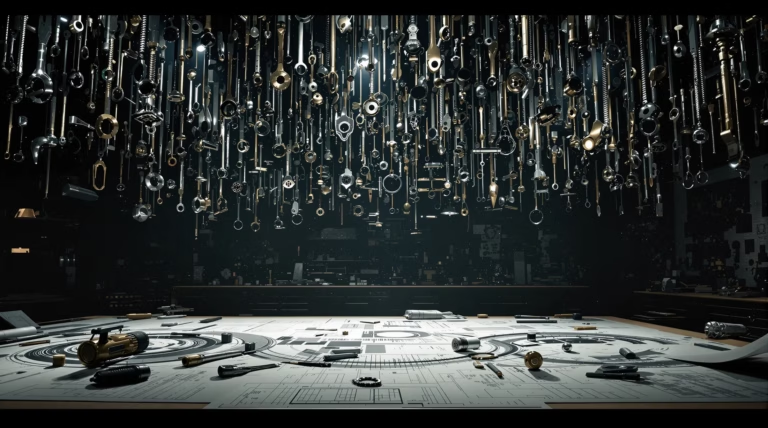Tool and Die Maker: Skills, Responsibilities, and Career Insights
Discover the intricate world of tool and die making, where precision craftsmanship meets modern manufacturing technology. This comprehensive guide explores the essential skills, responsibilities, and career opportunities in this vital industrial profession.
What is a Tool and Die Maker?
A Tool and Die Maker is a highly skilled craftsperson who designs, creates, and maintains precision tools, dies, molds, and fixtures essential for manufacturing processes. These professionals serve as the cornerstone of modern manufacturing, transforming engineering concepts into tangible production equipment. Their unique ability to examine parts, prototypes, or technical drawings enables them to develop tooling necessary for efficient and accurate manufacturing.
Working across multiple industries including:
- Automotive manufacturing
- Aerospace engineering
- Electronics production
- Medical equipment manufacturing
Definition and Overview
Tool and die makers possess the technical knowledge and manual dexterity to conceptualize, design, and fabricate manufacturing tooling. These skilled artisans typically work in toolroom environments, creating:
- Dies for material forming
- Precision cutting tools
- Jigs and fixtures
- Measurement gauges
- Manufacturing molds
Distinguished by their comprehensive understanding of manufacturing processes and materials, tool and die makers must interpret complex engineering specifications while maintaining exceptional spatial reasoning abilities and meticulous attention to detail.
History and Evolution of Tool and Die Making
The craft originated during the Industrial Revolution, evolving from individual craftsmanship to standardized production. The progression of the field can be marked by several key technological advances:
| Era | Key Developments |
|---|---|
| 19th Century | Hand tools and simple dies for basic manufacturing |
| Early 20th Century | Specialized knowledge in metallurgy and mechanical principles |
| Late 20th Century | Introduction of CNC, CAD, and CAM technologies |
| Modern Era | Integration of digital programming and traditional craftsmanship |
Essential Skills for Tool and Die Makers
Modern tool and die makers must demonstrate expertise in both traditional craftsmanship and contemporary technology. Their work requires precision to tolerances as fine as .0001 of an inch, demanding both technical knowledge and refined physical capabilities.
Technical Skills Required
- Blueprint interpretation and technical drawing analysis
- Precision measurement and instrument mastery
- Conventional machine tool operation (lathes, mills, grinders)
- CNC machinery programming and operation
- CAD software proficiency
- Metalworking processes knowledge
- Heat treatment and plating expertise
Soft Skills for Success
Beyond technical expertise, successful tool and die makers require exceptional manual dexterity and hand-eye coordination for precise component crafting. Their work demands unwavering attention to detail and patience, as even slight errors can compromise expensive tooling or product quality. This meticulous work often involves maintaining focus while working in challenging positions to achieve the necessary precision.
- Problem-solving capabilities for unique manufacturing challenges
- Effective communication skills for collaboration with engineers and designers
- Sustained concentration abilities for detailed work
- Adaptability to new technologies and techniques
- Commitment to continuous learning and skill development
Responsibilities of a Tool and Die Maker
Tool and die makers serve as the critical bridge between design concepts and finished products. Their primary responsibilities include interpreting complex engineering drawings and technical specifications to create precision tools, dies, molds, and fixtures. These professionals ensure manufacturing efficiency by designing, fabricating, and maintaining specialized tooling that transforms raw materials into precise finished components.
Operating across diverse sectors including automotive, aerospace, electronics, and medical device manufacturing, these specialists maintain dual responsibilities: creating new tooling and maintaining existing equipment. Their work directly influences product quality, production efficiency, and manufacturing costs, making them indispensable in modern industrial settings where precision is essential.
Daily Tasks and Duties
- Reviewing engineering drawings and specifications
- Developing detailed tool construction plans
- Operating precision machinery (lathes, mills, grinders, CNC equipment)
- Performing meticulous measurements with specialized instruments
- Inspecting and maintaining existing tools and dies
- Troubleshooting production issues
- Engaging in prototype development
- Testing and adjusting tooling for optimal performance
Safety and Quality Control
| Safety Protocols | Quality Control Measures |
|---|---|
| Personal protective equipment use | Comprehensive inspection procedures |
| Clean workspace maintenance | Dimensional accuracy verification |
| Lockout/tagout procedures | First article inspections |
| Material handling guidelines | Statistical process control |
| Equipment maintenance | Quality documentation and traceability |
Career Path and Opportunities in Tool and Die Making
The tool and die making career path combines traditional craftsmanship with modern technological expertise. While employment growth remains moderate, the field offers stable opportunities due to retirement rates and manufacturing demands. Career advancement possibilities include:
- Tool design specialists
- CNC programming positions
- Quality assurance management
- Manufacturing supervision
- Independent tool and die shop ownership
Success in this field rewards long-term commitment, with opportunities expanding as practitioners develop specialized expertise in specific manufacturing sectors or specialized tooling processes.
Training and Education
The foundation for a successful tool and die making career begins with strong educational preparation in mathematics, science, and technical subjects. A high school diploma or equivalent serves as the minimum requirement, with coursework in algebra, geometry, physics, and computer-aided design providing essential groundwork. Technical and vocational schools offer specialized programs combining classroom instruction with hands-on training in machining techniques, blueprint reading, and metallurgy principles.
- Associate degree programs (1-2 years) covering:
- CNC programming fundamentals
- Precision measurement techniques
- Quality control methodologies
- Tooling design principles
- Manufacturing technology
Certification and Apprenticeship
| Apprenticeship Components | Requirements |
|---|---|
| Duration | 4-5 years |
| Shop-floor Experience | 8,000 hours |
| Technical Instruction | 576+ hours |
| Program Sponsors | Manufacturing companies, unions, industry associations |
Professional certification through organizations like the National Institute for Metalworking Skills (NIMS) provides formal recognition of expertise. These credentials require both written examinations and performance-based assessments in specialized areas such as stamping, CNC programming, and die making.
Job Outlook and Salary
- Current positions: approximately 357,000 combined machinist and tool and die maker roles
- Annual job openings: 35,400 positions
- Salary ranges:
- Entry-level: $40,000-$45,000
- Experienced professionals: $55,000-$70,000
- Top specialists: $85,000+
Tools and Technologies Used by Tool and Die Makers
Modern tool and die makers blend traditional craftsmanship with advanced technology, utilizing precision instruments capable of measurements within .0001 inch tolerances. Computer-aided design (CAD) software and computer numerical control (CNC) machines have revolutionized the field, enhancing accuracy and efficiency while complementing traditional skills.
Common Tools and Equipment
- Precision measuring instruments:
- Dial indicators
- Height gauges
- Surface plates
- Optical comparators
- Coordinate measuring machines
- Machine tools:
- Manual mills and lathes
- Surface grinders
- Electrical discharge machines (EDM)
- Heat-treating furnaces
Emerging Technologies in Tool and Die Making
Additive manufacturing, commonly known as 3D printing, is revolutionizing tool and die making through the production of intricate components previously impossible to create using traditional methods. This technology enables rapid prototyping and the creation of advanced tooling featuring internal cooling channels and sophisticated performance-enhancing elements.
- Key technological advancements:
- Advanced simulation software for virtual testing
- Automated robotic systems for material handling
- AI and machine learning for real-time optimization
- IoT sensors for performance monitoring
- Predictive maintenance systems
| Technology | Impact on Production |
|---|---|
| 3D Printing | Complex geometries, rapid prototyping, internal features |
| Automation Systems | Material loading, tool changing, inspection processes |
| AI/Machine Learning | Parameter optimization, wear prediction, maintenance scheduling |
| IoT Integration | Real-time monitoring, issue detection, performance tracking |
Despite these technological advances, the expertise of skilled tool and die makers remains essential. Their experience and judgment are crucial in implementing these new technologies effectively to achieve optimal production results. The combination of traditional craftsmanship with modern innovations continues to drive the industry forward.







